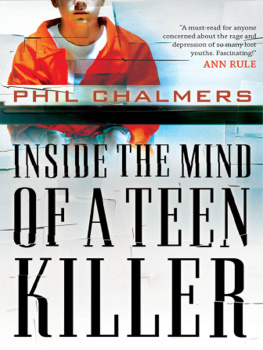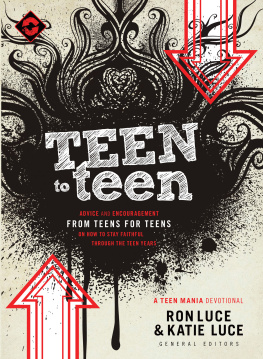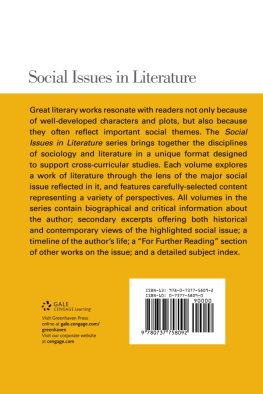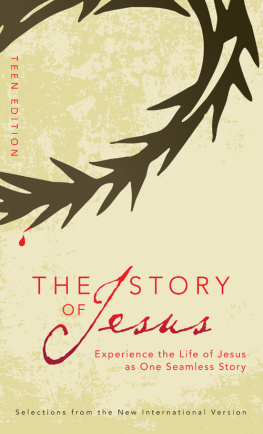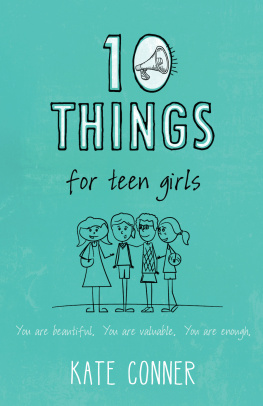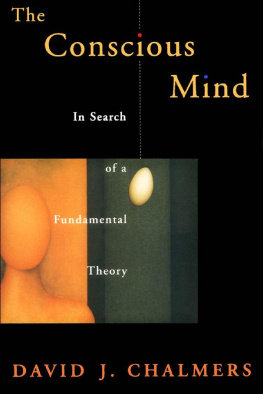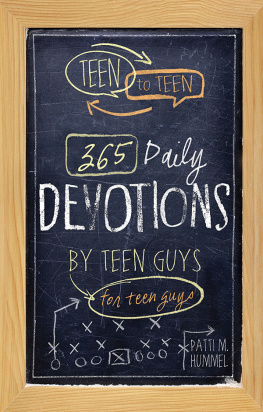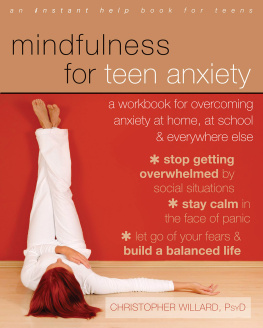
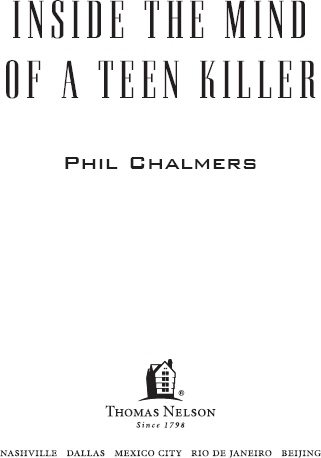
2009 by Phil Chalmers
All rights reserved. No portion of this book may be reproduced, stored in a retrieval system, or transmitted in any form or by any meanselectronic, mechanical, photocopy, recording, scanning, or otherexcept for brief quotations in critical reviews or articles, without the prior written permission of the publisher.
Published in Nashville, Tennessee, by Thomas Nelson. Thomas Nelson is a registered trademark of Thomas Nelson, Inc.
Unless otherwise noted, Scripture quotations are taken from the HOLY BIBLE, NEW INTERNATIONAL VERSION. 1973, 1978, 1984 by International Bible Society. Used by permmission of Zondervan Publishing House. All rights reserved.
Thomas Nelson, Inc., titles may be purchased in bulk for educational, business, fund-raising, or sales promotional use. For information, please e-mail SpecialMarkets@ThomasNelson.com.
Library of Congress Control Number: 2009923244
ISBN: 978-1-59555-152-8
Printed in the United States of America
09 10 11 12 13 QW 5 4 3 2 1
CONTENTS
This book is dedicated to the victims and families of teen
killers, and to children and teenagers who are victims of
abuse and bullying. I pray this project improves the lives of
children everywhere.
We are living in the most violent times in recorded peacetime history.
Medical technology saves more lives than ever before, preventing more deaths of victims of attempted murders every year. But the rate at which our citizens are trying to kill each other may well be the highest in recorded peacetime history.
A study published by the University of Massachusetts and Harvard University in 2002 demonstrated that if we had 1970s-level medical technology today, the murder rate would be three to four times what it is. In other words, three out of four deaths from attempted murders today are prevented by the advances in medical technology in just the last thirty years.
If we had 1930s-level evacuation, transportation, and medical technology (no automobiles or telephones for most people, and no antibiotics), the murder rate would probably be at least ten times what it is today. If we had 1870s frontier-level medical technology (no cars, no phones, no antibiotics, no antiseptics, and no anesthesia), the rate at which we would be successful at killing each other could be fifteen times what it is now.
We live in times that make the violence of the Old West pale by comparison. This explosive increase in the serious assault rate can be seen in every major industrialized nation around the world. We are living in tragically violent times, and there is every reason to believe that it is going to get worse.
What our children are doing in the high schools and the middle schools today predicts what they will be doing as adults in our communities and our workplaces in the years to come. The kids who gave us Jonesboro in the middle school and Columbine in the high school are now giving us mall massacres, workplace massacres, and college massacreslike Virginia Tech.
In this tragic, violent new age, it has never been more important to study and understand the roots of violence. If our civilization is going to survive, we must study and master the violence within our children and our society. And that is exactly what this book is all about.
Phil Chalmers has interviewed the killers. He has corresponded with them extensively. He has exhaustively researched their crimes. There is no human being alive who knows more about these killers, and as you read this book, he will truly take you Inside the Mind of a Teen Killer.
Phil has written a book that involves the reader in the unraveling of a mysterynamely, why these kids became killers. And, most importantly, what we can do to stop the killingif anyone is willing to listen. And we must listen. Our future and our survival depend upon it.
So let us study and learn from this book. And let us pray that we can use the information here to save lives, prevent more murders, and turn the tide of violence in our civilization.
DAVE GROSSMAN
Lt. Col., U.S. Army (ret.)
Director, Killology Research Group
(www.killology.com)
Author of On Killing, On Combat,
and Stop Teaching Our Kids to Kill
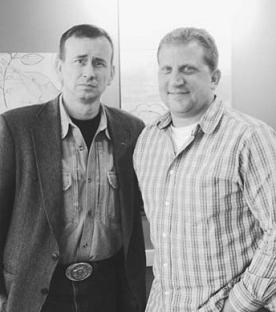
Phil (right) pictured with murder expert Lt.Col. Dave Grossman, who wrote the foreword of this book. Lt. Col. Grossman has made a huge impact on Phils writing and speaking career and is a big inspiration to him.
In Michael Newtons book Killer Kids, he tells how during the carefree 1950s, former FBI director J. Edgar Hoover warned Congress and the nation at large of a startling new menace, ranked second only to godless Communism as a critical threat to life, liberty, and the American way. A new crime wave was brewing... spawned from a juvenile jungle whose denizens drove hot rods, dressed in leather jackets, and kept switchblades at the ready, anxious to rumble with any and all corners. He was talking about the growing threat of teen violence almost five decades agoa problem that today is getting out of control and deserves our undivided attention.
I did not write this book to glorify crime or to sensationalize these unfortunate tragedies. I have no hidden agenda, and I didnt write it just to make a quick buck.
I wrote this book with only one thing in mindchange. My hope is that the research and studies I have compiled during the last two decades can create positive change; educate law enforcement, youth workers, teachers, and parents about warning signs in potentially violent teens; and hopefully save many innocent lives.
What sets this book apart from the many other crime books is the multitude of firsthand crime accounts by dozens of teen killers. You could say that I have cowritten this book with more than two hundred inmates who killed when they were teens, in addition to a handful of other high-profile serial killers and mass murderers.
These offenders will explain what led up to their crimes, what they were thinking about during their crimes, and what motivated them to commit such terrible horrors. More importantly, they will explain how they could have been stopped and will offer warning signs that any person paying attention could have noticed.
When I was a kid in Cleveland, Ohio, in the sixties, we lived in a not-sonice urban section of town. Our neighborhood was so crime-ridden and corrupt that one of our burglars was even a police officer. My dad held him at gunpoint until the good police came to remedy the situation. When I was ten years old, my brother and I were robbed at knifepoint on our way to school. My parents finally decided it was time to move, and we escaped to the suburbs.
After graduating from high school, I gave college a shot and attended Kent State University in Ohio. It wasnt my cup of tea, so I changed direction and started working with young people at a juvenile prison. I had been a pretty bad role model to my peers growing up and had led others down the wrong path of sex, drugs, alcohol, and trouble. I felt it was time that I repaid society for some of the wrong I had done, so I traveled to the youth prison every week and started personally connecting with the locked-up young men.
This experience influenced me so much that I decided to devote my life to helping young people steer clear of the destructive life of crime. My expertise over the years has been in youth culture, youth entertainment, and helping teens avoid destructive behavior. I have studied related subjects like teen sex, STDs, drug and alcohol abuse, drunk driving, suicide, teen violence, school violence, and crime prevention. I speak to teens, write books, and help guide students, teachers, police, parents, and youth workers in the right direction.
Next page
